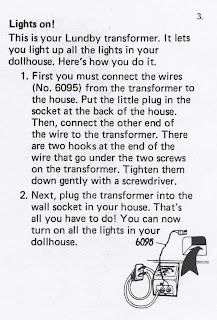A big thank you to all who cast a vote for their favorite Lundby era!
To recap, my super-scientific poll asked you to pick your favorite period of Lundby. The six choices were earliest Lundby and 1960s, 1970s, 1980s, 1990s, modern Lundby, or "I love them all!"
The top two replies were 1970s, with 46% of the vote, and earliest Lundby and 1960s, with 33%. In third place was "I love them all!" with 16% of the vote.
In celebration of the top-ranked era, I'd like to show you some of the things I love most about my 1970s Lundby house.
When I first saw the wooden rails on the bottom I thought they had been added by a previous owner, but I now know better--thanks to Lundby expert Elisabeth in Sweden. Like the 1960s Gothenburg, early 1970s models had wooden rails with holes for screw-in legs. I haven't looked too hard for a set of legs, as they tend to be very expensive and I wouldn't use them since my house sits on top of extensions.
I also love the early 1970s New Scandinavia modular bedroom set. There's just something about that psychedelic pink, red, and orange bedspread and how it looks against the crazy brown floral wallpaper...
And what's not to love about the bright orange sectional sofa with clashing throw pillows? Pardon the technical difficulties--the matching corner shelf won't stay stuck to the wall!
Speaking of clashing colors, I really dig the contrasting blue and orange of the 1970s Leksand and Scandia furniture, and how it looks against the blue dining room floor. Aren't the Swedish dala horse decals a sweet touch?
More contrasting colors in the bathroom, with the butterscotch yellow fixtures against a red tile backing. I also love the sconce on the sauna. The thin slats of wood add great detail.
Those of you who voted for earliest Lundby and 1960s, don't dismay. I'll be back soon with a beautiful collection I think you'll love!

















